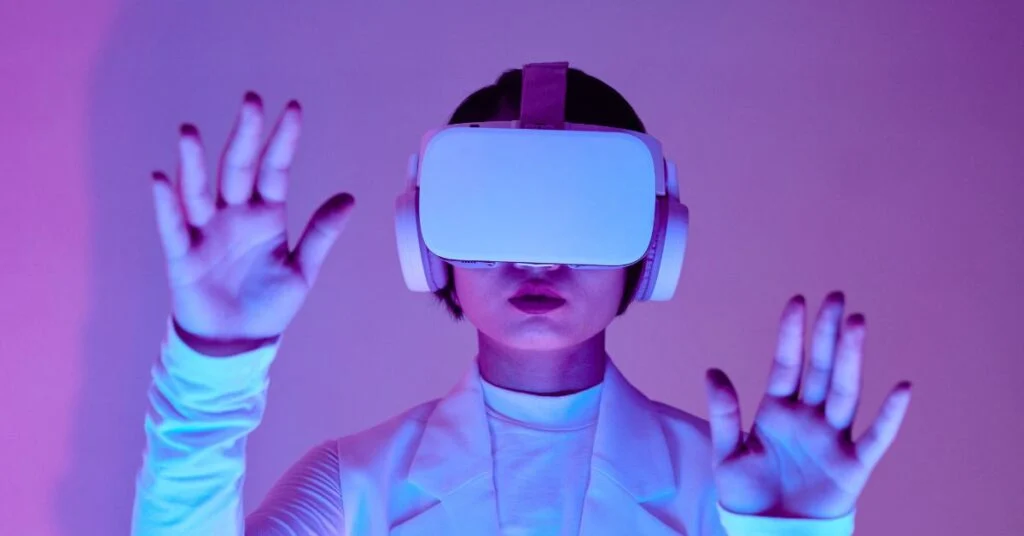What is a Virtual Economy? A Comprehensive Guide with Examples

The metaverse has established itself as an integral part of the economy. According to McKinsey, it has the potential to become the largest new growth opportunity for multiple sectors—retail, consumer packaged goods, healthcare, manufacturing, financial services, and technology—over the next decade. Investment in the metaverse exceeded $120 billion in 2022. Moreover, the expectation is that $5 trillion will come from this market by 2030. So how does a virtual economy work? And, how different is it from the real economy? Here is a comprehensive overview of everything you need to know about a virtual economy.
What is the Virtual Economy?
The virtual economy exists within a virtual or digital world where people can perform economic activities and transactions in exchange for virtual or real assets. It involves the exchange of virtual goods, services, and currencies that can only be used within the virtual environment or for real economic benefit. The virtual economy emerged in the early 1990s within a Multi-User Dungeon (MUD) gaming environment. It has since grown significantly in the online marketplace. It now covers everything from gaming platforms such as Fortnite and Minecraft to non-gaming virtual worlds such as Somnium Space.
How Does the Virtual Economy Work
The virtual economy functions using a platform or system that enables the trade of virtual currencies or goods. Activities such as gaming, socializing, working, and trading happens on these virtual platforms. Users can earn or purchase virtual goods and currencies from online marketplaces, then use them for trading or buying other virtual commodities or services. Occasionally, virtual items can also be transformed into real-world currency, but this is not always permitted by the platforms. The virtual economy is often supported by the platform operator, who may take a commission or transaction fee for the services rendered. The worth of virtual currencies and goods can also be affected by their supply and demand, with some items becoming more valuable over time.
Examples of Virtual Economy
1. Second Life
Second Life is a virtual world that allows users to create avatars for themselves and interact with one another through socializing gaming, and other activities. The players can buy, sell, and trade virtual goods and services, such as virtual real estate, clothing, furniture, and accessories, using the in-game currency called the ‘Linden’ dollar (L$). The Linden dollar doesn’t have real-world value; however, the game has become so successful that it has generated a real-world economy around it. Linden dollars can be exchanged for real-world currency. Some players have even made a living from their virtual businesses. Brands such as Nike and Coca-Cola have set up virtual storefronts in the Second Life marketplace to sell their products and services to the users.
2. Decentraland
Another example of a virtual economy is Decentraland, which offers an innovative way for users to create and monetize digital content and applications while providing a unique and immersive virtual experience. Decentraland is an Ethereum-based virtual world or metaverse that enables users to create, play games, exchange collectibles, socialize, and monetize. MANA, a cryptocurrency powers the virtual economy of Decentraland. Users can use it to buy, sell, and trade virtual land and other digital assets. The popularity of the Decentraland metaverse has also attracted several brands to open up their virtual store on the platform. These include Samsung, Sotheby’s, Louis Vuitton, Burberry, and Starbucks.
ALSO READ: The Ultimate 2023 Guide to Marketing in Metaverse: Best Practices, Examples
Real Vs. Virtual Economy
The real economy is the foundation of modern society by creating jobs and providing goods and services essential for our daily lives, such as those related to agriculture and manufacturing, healthcare, and transportation. In contrast, the virtual economy comprises intangible goods and services, such as games, digital art, and accessories. The value of these goods and services can be more subjective and prone to fluctuation based on factors like user preferences and demands. Unlike the real economy, the virtual economy is not concerning regulations and legal frameworks, which creates challenges, particularly with respect to issues like intellectual property rights and fraud.
However, the virtual economy can also offer new and unique opportunities for growth and innovation and is fast becoming an important contributor to global economic growth by generating revenue, creating new jobs, and fostering the development of new businesses and industries. The virtual economy also breaks down geographic barriers, allowing people from different parts of the world to participate in economic transactions, promoting greater economic interThe virtualedness and global trade and commerce.
How to Earn Money in the Virtual Economy
Virtual economy is opening new and unique ways to earn. These include:
- Selling virtual goods or services, such as art, accessories, clothing, collectibles, furniture, land, coaching, and art commission
- Participating in play-to-earn games where players can earn digital assets or cryptocurrency
- Becoming a metaverse DJ or organizing virtual events like concerts, conferences, and concerts can generate revenue
- Buying and selling digital real estate on platforms such as The Sandbox, Decentraland, and Otherside
- Owning a virtual land in a prime location that can be rented out to businesses and other users to make money
- Opening an art gallery to display NFTs and artwork in the metaverse where you can earn by selling art or charging an entry fee for your art gallery
- Applying to affiliate programs in the metaverse, such as crypto affiliate programs like Ledger Wallet and Binance, or native affiliate programs like Aftermath Islands and Second Life
To conclude, the virtual economy has become an important contributor to global economic growth. This happens by creating new jobs and opportunities, promoting entrepreneurship, generating revenue for individuals and businesses, and changing how we think about the global economy. To understand more about these opportunities and developments, explore these AI and machine learning courses offered by Emeritus in collaboration with leading global universities.
Write to us at content@emeritus.org







